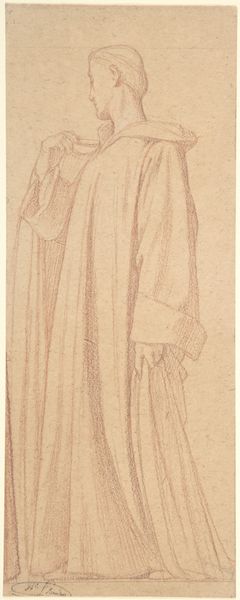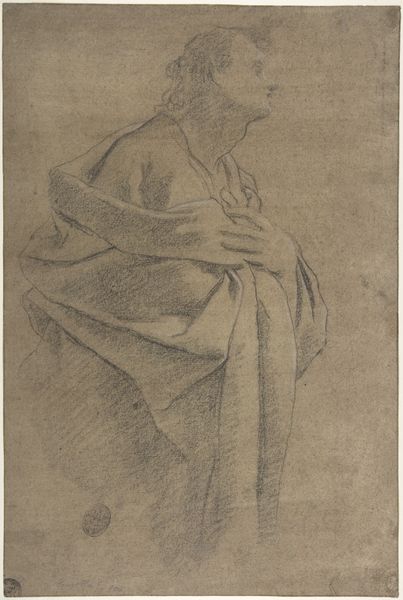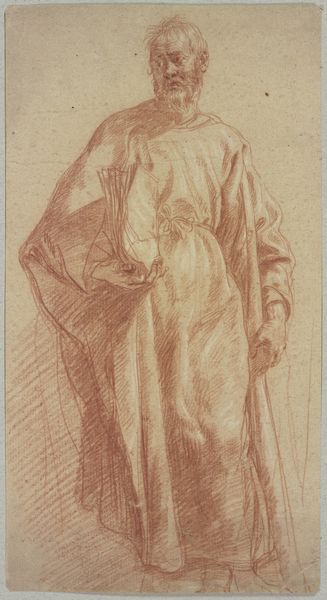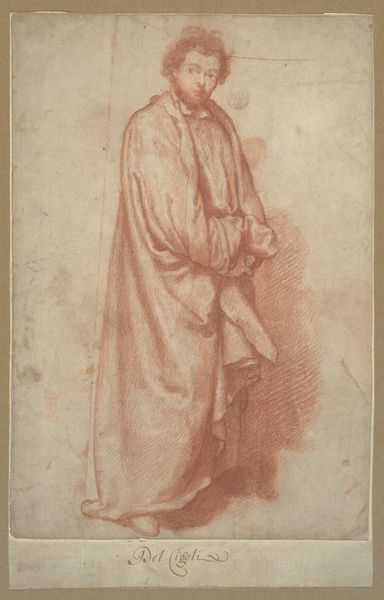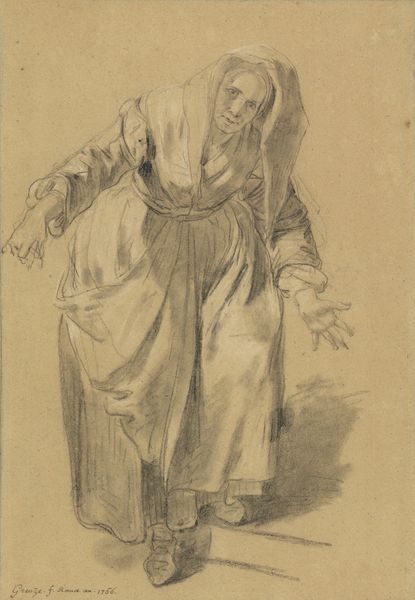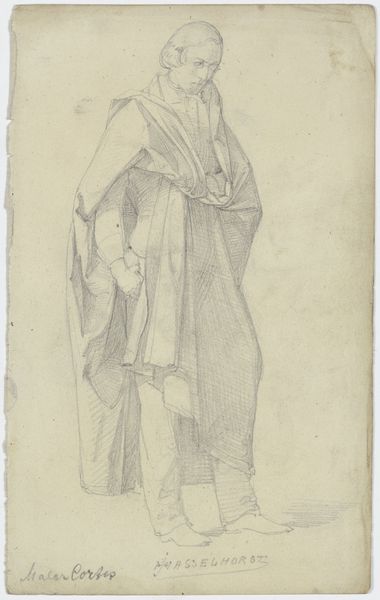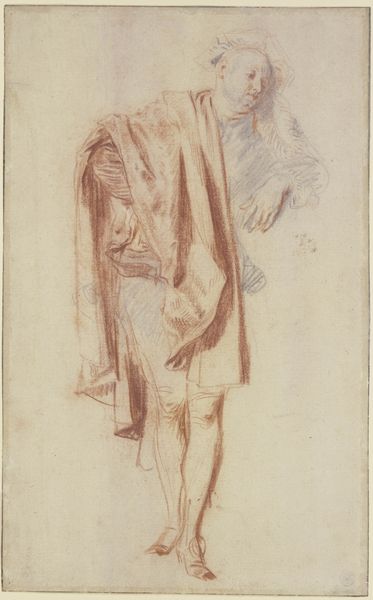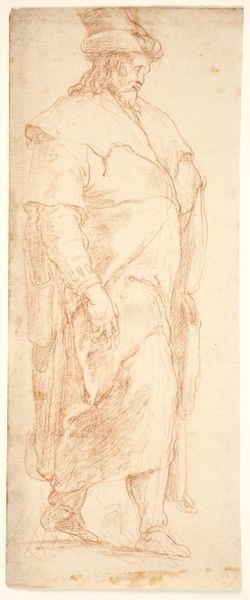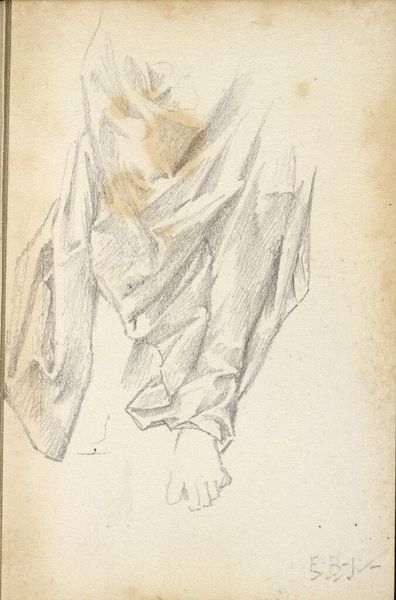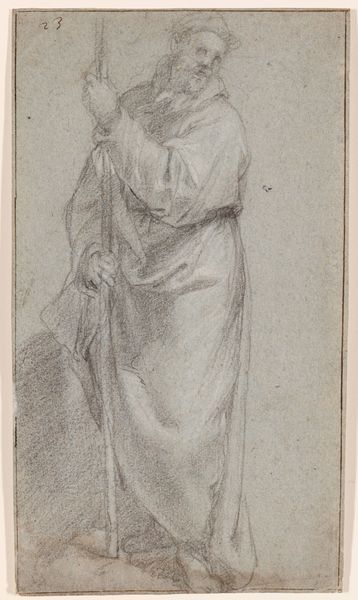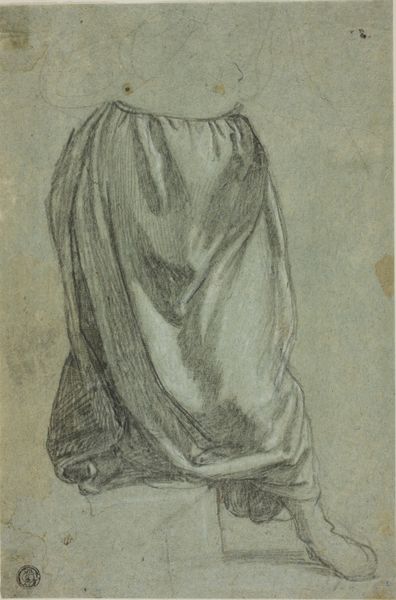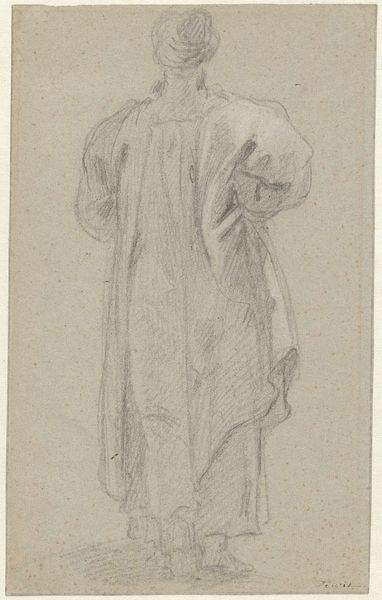
drawing, print, paper, pencil
#
portrait
#
drawing
# print
#
figuration
#
paper
#
ancient-mediterranean
#
pencil
#
men
#
academic-art
Dimensions: sheet: 14 3/4 x 8 1/2 in. (37.5 x 21.6 cm)
Copyright: Public Domain
Curator: Welcome. Before us we have a drawing attributed to an anonymous artist from the 18th century entitled "Man in Roman Toga," currently held in the Metropolitan Museum of Art. It's executed in pencil on paper. Editor: It's a beautiful, delicate study. There's a quiet dignity in the figure’s pose and the way the light catches the folds of the toga. It feels almost melancholic. Curator: Indeed. The style adheres closely to academic art traditions of the period, focusing on classical themes. This likely comes from a period deeply influenced by the Grand Tour, when young aristocrats travelled Europe and brought back an interest in classical antiquity. Editor: It also resonates with the visual language used to establish power, a language that often appropriates historical references to legitimize authority. Togas weren't just clothes; they symbolized citizenship and status in the Roman Republic and Empire. Is it possible that this is about aspirations and visual association? Curator: Precisely. Though created centuries later, it still operates within a power structure that reveres classical models. This also played into artistic training with emphasis placed on draftsmanship and mastery of representing the human form as seen here, through close observation. Editor: The figure’s posture is very intriguing. The arm across the body feels almost protective, vulnerable even, despite the confident historical clothing. It feels intimate rather than grandiose, especially considering it's likely based on idealized perceptions of the classical world filtered through a specific class lens. Curator: The work provides an important commentary on cultural memory and how images continue to perpetuate particular power structures. By visually aligning with antiquity, contemporary societies aim to gain credibility and assert permanence. Editor: This kind of image continues to shape our understanding of both historical and contemporary notions of gender, class, and authority. I appreciate seeing a piece like this—it pushes us to think critically about whose stories we elevate and how history gets shaped in the visual domain. Curator: Agreed. This drawing offers us insight not only into the 18th century’s understanding of classical antiquity, but also the relationship between artistic skill and power within these constructs. Editor: Ultimately, reflecting on this drawing challenges me to contemplate on whose shoulders does history stands upon.
Comments
No comments
Be the first to comment and join the conversation on the ultimate creative platform.

